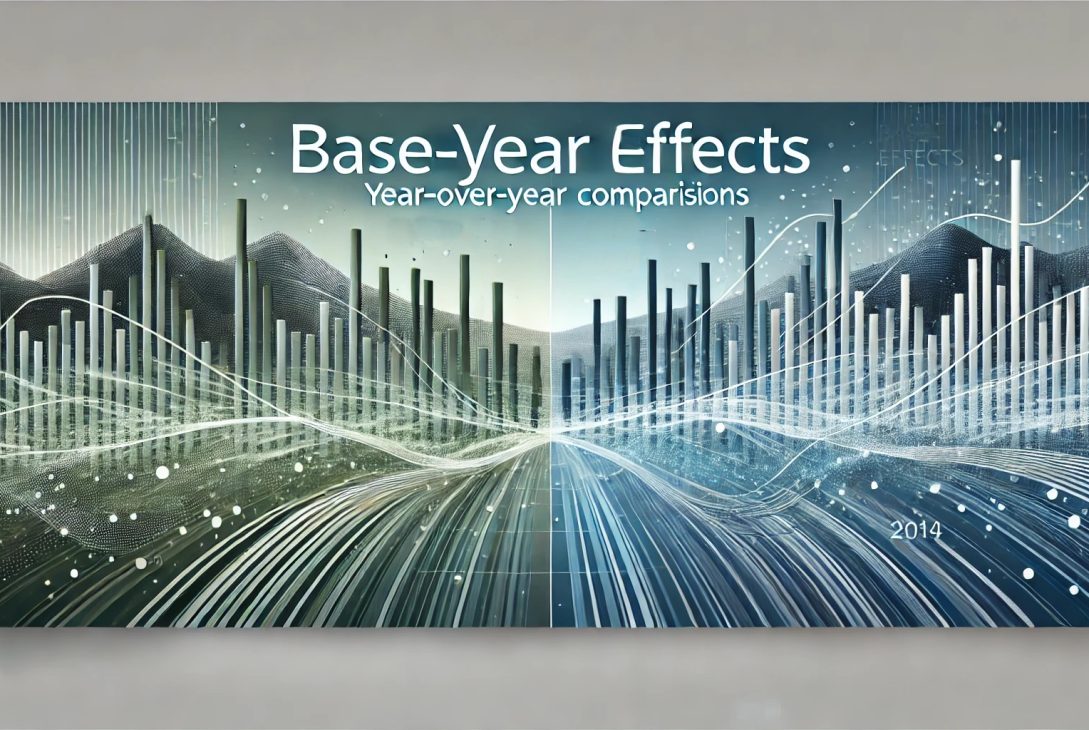Base-year effects refer to the influence that data from a specific reference year, known as the “base year,” can have on current economic indicators like inflation, GDP, or price indexes.
When comparing economic data over time, the base year serves as a point of reference to track changes and trends. However, fluctuations or anomalies in the base year’s data can distort the interpretation of current data.
How base-year effects impact economic measurements
Economic data is often presented in percentage terms relative to the base year. For example, if a particular product’s price was much lower in the base year compared to the current year, the inflation rate calculated using the base year as a comparison point might appear exaggerated. Conversely, if prices were unusually high in the base year, the inflation rate could seem lower than it actually is.
Why base-year effects matter
- Inflation measurement: Inflation rates are heavily influenced by base-year effects. For example, if inflation was unusually low or high in the base year, it can either overstate or understate the true inflation trend in the following years.
- Economic growth comparisons: Similarly, comparing GDP growth over different periods can be skewed by base-year effects if the reference year had an economic shock (such as a recession or boom).
- Distortion of long-term trends: Over time, base-year effects can cause short-term distortions in long-term data analysis, making it harder to assess the true trajectory of an economy.
How to mitigate base-year effects
To mitigate base-year effects, economists often use adjustments such as chain-weighting, which recalculates price indexes using updated weights instead of sticking with the fixed base year. This ensures more accurate and consistent comparisons between years, smoothing out extreme variations.
Example of base-year effects in action
If inflation in the base year was exceptionally low, the current inflation rate might appear higher simply because the comparison year had a very low starting point. Conversely, if the base year had significant inflation, the rate of increase in subsequent years might appear less dramatic than it actually is.
Last modified: November 19, 2024




